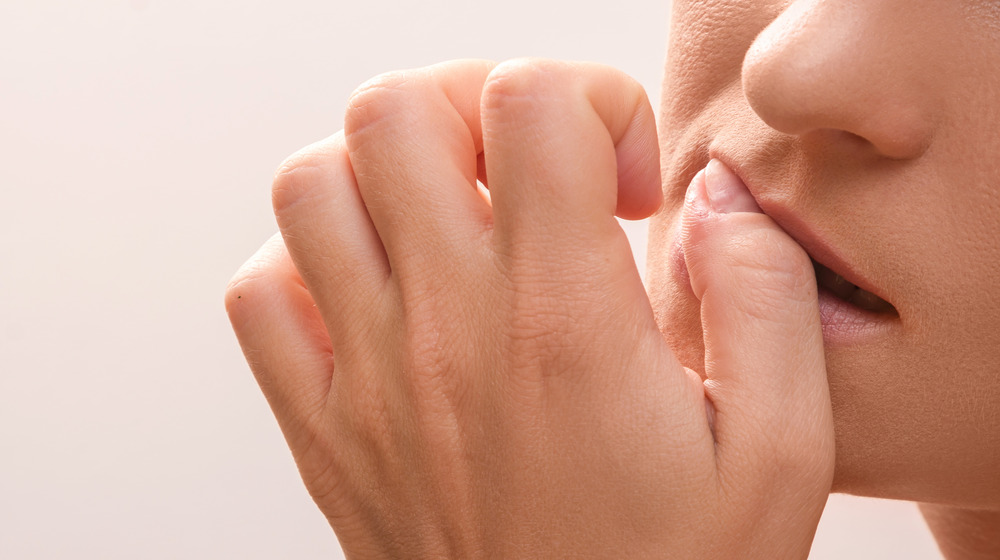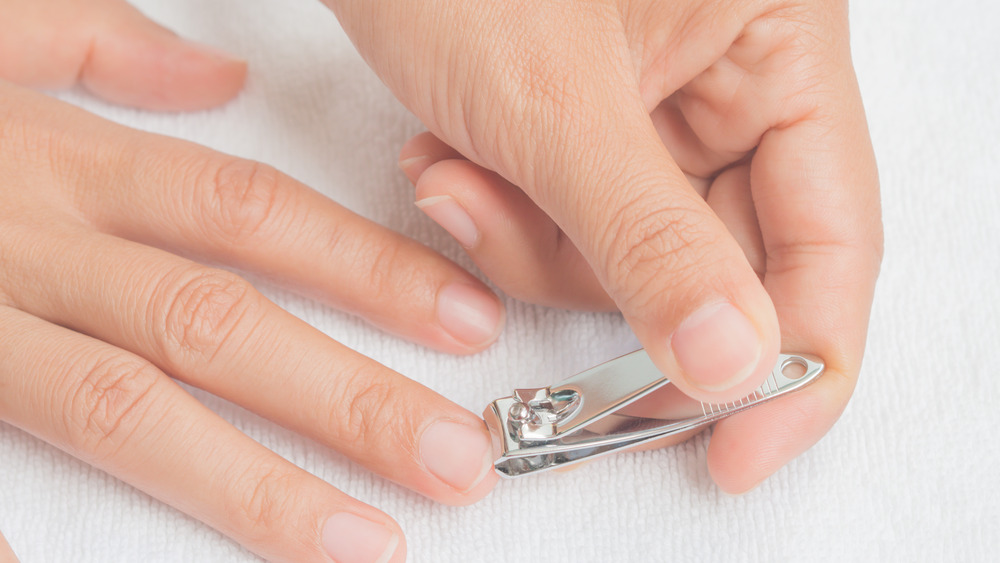Why Do We Get Hangnails And Why Are They So Painful?
The skin on our hands is quite sensitive. While paper cuts, ingrown nails, or finger pricks are all painful, a hangnail also ranks high on that list. Contrary to what the name indicates, hangnails are not actually nails at all (via Men's Health). Rather, they're sharp pointed edges made from skin cells that develop around the cuticles of our nails. Even less known, hangnails can emerge both on our fingernails as well as our toenails (via Medical News Today). But why do hangnails occur and why are they so painful?
Hangnails can develop for any number of reasons. According to experts at Women's Health, one of the most common reasons is due to having dry hands. You've probably noticed that during cold weather seasons our hands often become flaky or cracked. Just like the rest of our hand, this lack of moisture affects our cuticles as well and increases the likelihood of hangnails. Additionally, if you're someone who frequently picks or bites at your nails, you also stand an increased chance of developing a hangnail due to the fact that different parts of the cuticle are being torn off roughly and inconsistently. In rare instances, hangnails can also be a possible sign of a need for more protein in your diet.
The area around our nails contains sensitive nerve endings making hangnails painful
Hangnails are often accompanied by redness, swelling, and sometimes even a painful throbbing sensation. A combination of these symptoms can indicate possible infection, especially if you notice pus buildup around the nail (via Medical News Today). The reason for the pain can be attributed to the sensitivity of the area. "Hangnails are usually at the end of a digit near the nail. There are many nerve endings and blood vessels in this area," says Dr. Davis, M.D., a dermatologist at the Mayo Clinic (via Men's Health). Inflammation around the nail can put additional pressure on these nerves which heightens the feelings of discomfort.
The American Academy of Dermatology Association suggests treating hangnails by removing them cleanly and evenly with a nail clipper or other tool. The important thing is to refrain from yanking it off as this can result in bleeding or further irritation. Lotions can also help to keep the area moist and antibiotic creams can be used to soothe soreness. Should you experience any worsening symptoms or if you have further questions, consider consulting with your dermatologist for additional treatment options.


